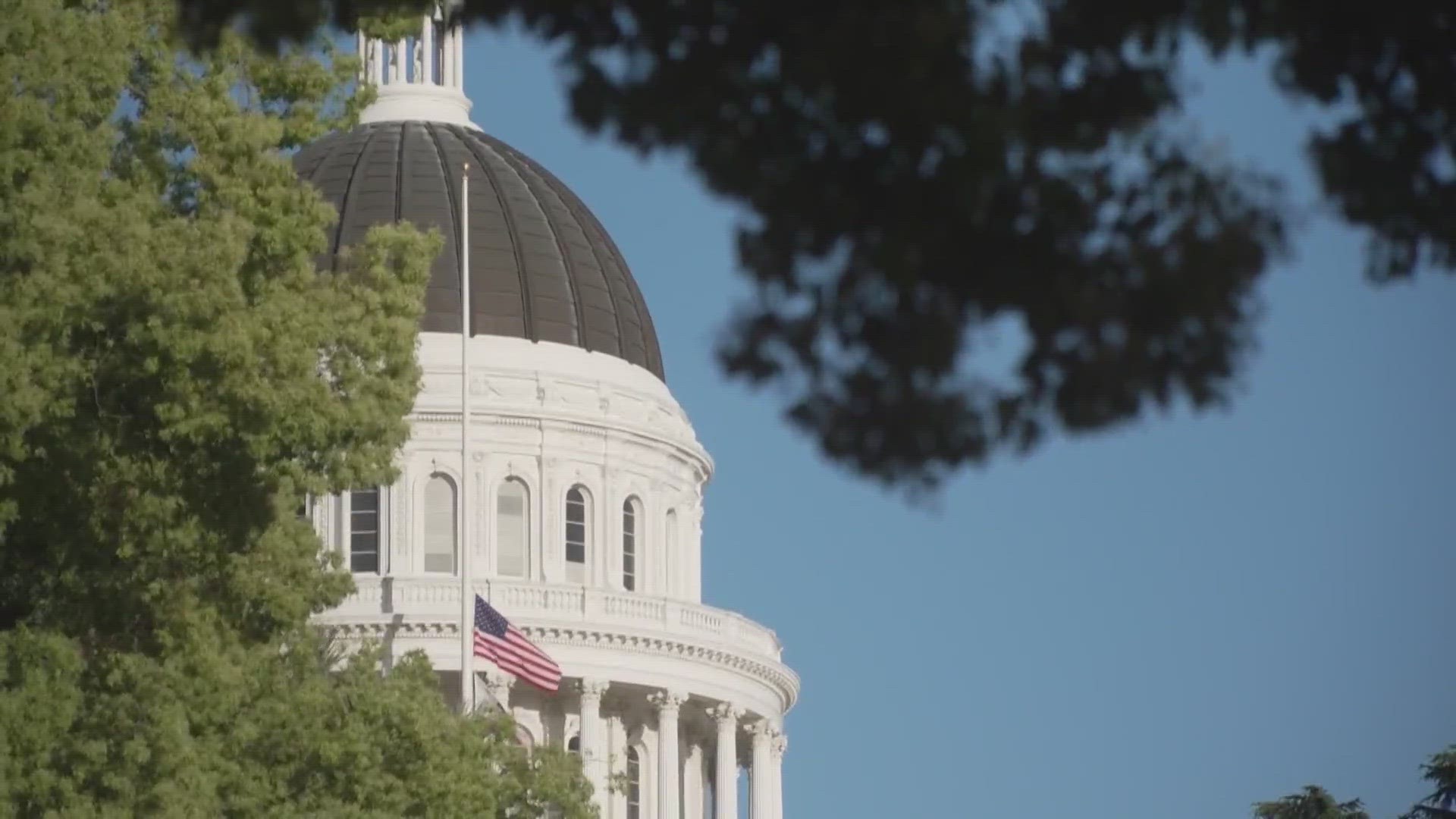CALIFORNIA, USA — California Gov. Gavin Newsom announced $291 billion state spending plan Wednesday with an estimated $37.9 billion deficit, a far lower shortfall than legislative advisers predicted last month.
The Legislative Analyst’s Office predicted in December the state would face a $68 billion deficit. The difference between that number and what Newsom announced is likely due in part to a rebounding stock market.
Newsom outlined how he wants to spend taxpayer dollars and other state money for the fiscal year starting July 1. He’ll spend the next six months hashing out a final plan with the Legislature, also controlled by Democrats.
The governor is proposing to draw $13 billion from the state’s reserves to cover some of the deficit. He’s also proposing $8.5 billion in spending cuts. Nearly $3 billion of that would come from climate programs and another $1.2 billion from housing programs.
Unlike the federal government, California law says the state must pass a balanced budget — meaning it can't spend more money than it has. Newsom and lawmakers were able to avoid major spending cuts last year through a combination of making smaller cuts, borrowing and pushing some expenses to future years.
Decisions about how to handle the deficit could be particularly fraught given this year's election, when many lawmakers will ask voters to keep them in Sacramento. Every decision Newsom makes, meanwhile, will be viewed through the lens of his future political ambitions. The Democratic governor's term goes through 2026, and he could run for president in 2028.
Some school superintendents had feared cuts, as education makes up the largest share of state spending. But public schools and the 5.8 million students they serve appeared to avoid severe reductions, with Newsom proposing to withdraw $5.7 billion from the state’s special savings account for public education to help make up the shortfall.
A voter-approved law requires the state to spend about 40% of its budget on public education in most years. During the Great Recession, public schools weathered deep cuts, leading to layoffs and school closures that many districts are still recovering from.
It's also a particularly precarious moment for public schools. Billions of dollars of federal coronavirus aid will be expiring in September, and districts that have come to rely on that spending will have to find ways to replace that money in their budgets.
In Los Angeles, the nation's second-largest school district has begun to wean itself off of pandemic funding. But its budget still relies on about $900 million — down from $1.8 billion last year — which helps pay for 1,800 full-time jobs, according to Alberto Carvalho, superintendent of the Los Angeles Unified School District.
Carvalho said cuts to schools “could be quite catastrophic,” noting that many of the state's districts signed new contracts with labor unions in the last year that include pay raises reflecting inflation.
In health care, last year Newsom signed legislation to gradually boost workers' pay to $25 an hour, with increases set to start June 1. He’s now asking lawmakers to add a so-called trigger requirement to say the increases are subject to how much state money is available. That’s likely to draw protest from labor unions that fought for the wage increase.
The budget numbers will shift again by the time Newsom announces a revised plan in May — after Californians have filed their tax returns and state officials have a better idea of how much money they have.
“We know we’re going to have to make difficult choices," Assemblymember Jesse Gabriel, a Democrat from Los Angeles and chair of the Assembly Budget Committee, said before Newsom's announcement. “We just don’t know how difficult they’re going to be yet.”
WATCH MORE ON ABC10: Gov. Newsom unveils spending plan amid looming budget deficit



















